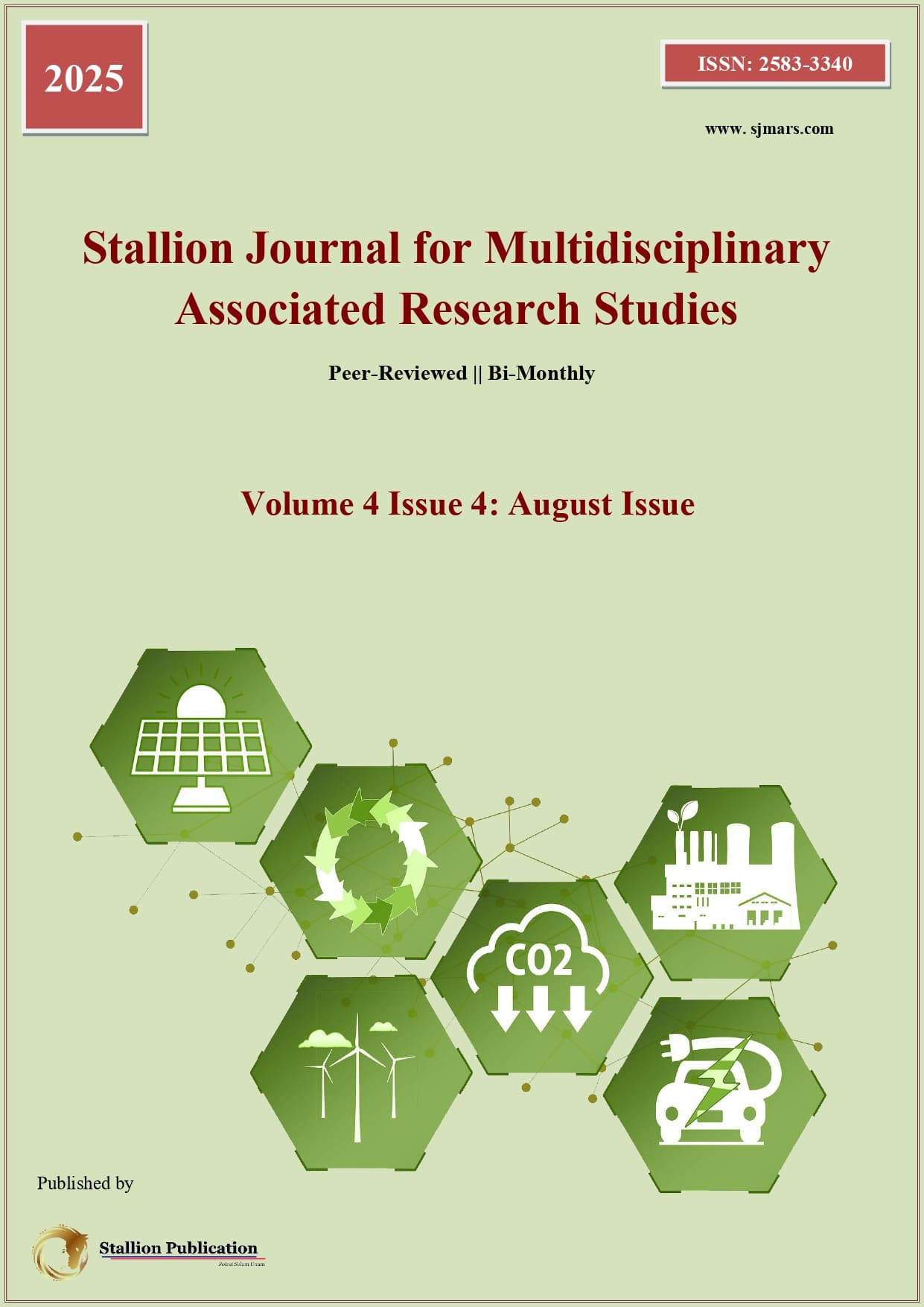Perception of Higher Secondary School Teachers on Smart Classroom Teaching and Its Impact on Students’ Learning Outcome
DOI:
https://doi.org/10.55544/sjmars.4.4.1Keywords:
Smart Classroom, Teachers’ Perception, Teaching-Learning Process, Students’ Learning OutcomesAbstract
The purpose of this study is to examine higher secondary school teachers’ perceptions of smart classroom teaching and its impact on students’ learning outcomes. The “Adhunik Siksha Yojna” initiative by the Department of Higher Education, Arunachal Pradesh, aims to enhance the quality of the teaching-learning process through the integration of smart classroom technologies. A descriptive survey method was employed using a self-designed questionnaire, and data were collected from a randomly selected sample of 30 teachers from six higher secondary schools across three districts: Changlang, Longding and Namsai. The findings reveal that over 90% of the classrooms are not yet adequately equipped to be considered smart classrooms. However, there has been noticeable progress in the number of smart classrooms compared to the previous year. Although many classrooms still require substantial upgrades, the implementation of the “Adhunik Siksha Yojna” provides optimism that the transformation to smart classrooms across the region will be achieved in the near future.
References
[1] Acharya. P.K, (2015). Computer-Assisted Instruction and Modular Approach of Teaching Theory and Practices in Pedagogy. Published by Kumud Publications, Delhi.
[2] Choudhary.A et al (2014). A Review on Applications of smart class and E-learning. International Journal of Scientific Engineering and Research (IJSER). Volume 2(3) ISSN (Online): 2347–3878.
[3] Koul, L. (2005). Methodology of Education Research. Vikas Publishing House Pvt Ltd, New Delhi.
[4] Keshari, R. K. (2014). Smart Class Room in India: An Emerging Speculation. International Journal of Education and Science Research Review. Vol. 1(6). ISSN 2348-6457.
[5] Lal & Joshi, (2013): Educational Management, Evolution and Statistic. Vinay Rakheja Publication, Meerut.
[6] Mengu, M. (2017). A study on the problems of Mid-Day Meal Programme at Elementary Schools of East Siang District of Arunachal Pradesh”. Unpublished M.Ed. Dissertation Indira Gandhi National Open University, Itanagar, Arunachal Pradesh.
[7] Menon, A. (2015). Effectiveness of smart classroom Teaching on the Achievement in Chemistry of Secondary School Students. American International Journal of Research, in Humanities, Arts and Social Sciences. ISSN (online): 2328-3696.
[8] Nathan. N (2013): Smart Classes: A New Expression of Learning. International Journal of Innovation Research and Development. Vol. 2(3), ISSN: 2278–0211(Online).
[9] Seetha (2013). Smart Class: Need of an Hour. PARAPEX – Indian Journal of Research. Vol. 3. ISSN – 2250-1991.
[10] Suo, Y. (2009). Open Smart Classroom: Extensible and Scalable Learning System in Smart Space Using Web Service Technology. IEEE Transaction knowledge and Data Engineering. Volume. 21(6).
[11] Xu, G. (2013). The Smart Classroom: Merging technologies for seamless Tele-education. www.researchgate.net/publications/3436988
[12] Das, R., & Borah, P. (2021). "Impact of Smart Classrooms on Learning in Assam." International Journal of Educational Technology.
[13] Ghosh, M. (2020). “Smart Education in India: Status and Challenges.” Journal of ICT in Education.
[14] Mishra, S., & Thomas, R. (2020). “ICT Use in Secondary Education in Rural India.” Educational Research Journal.
[15] Rao, P. (2021). “Teachers’ Perception on Digital Classrooms in North-East India.” Indian Journal of Teacher Education.
[16] Singpho, T., et al. (2022). “Technology and Teaching: A Study in Changlang District Schools.” NE Regional Education Review.
[17] Taye, M., & Darang, D. (2023). “Smart Classroom Adoption in Namsai: Teachers’ Voices.” Arunachal Education Studies.
[18] The Arunachal Times. (2021). “Smart Classrooms in Remote Districts: Progress and Challenges.”
Downloads
Published
How to Cite
Issue
Section
License
Copyright (c) 2025 Stallion Journal for Multidisciplinary Associated Research Studies

This work is licensed under a Creative Commons Attribution-NonCommercial-NoDerivatives 4.0 International License.






